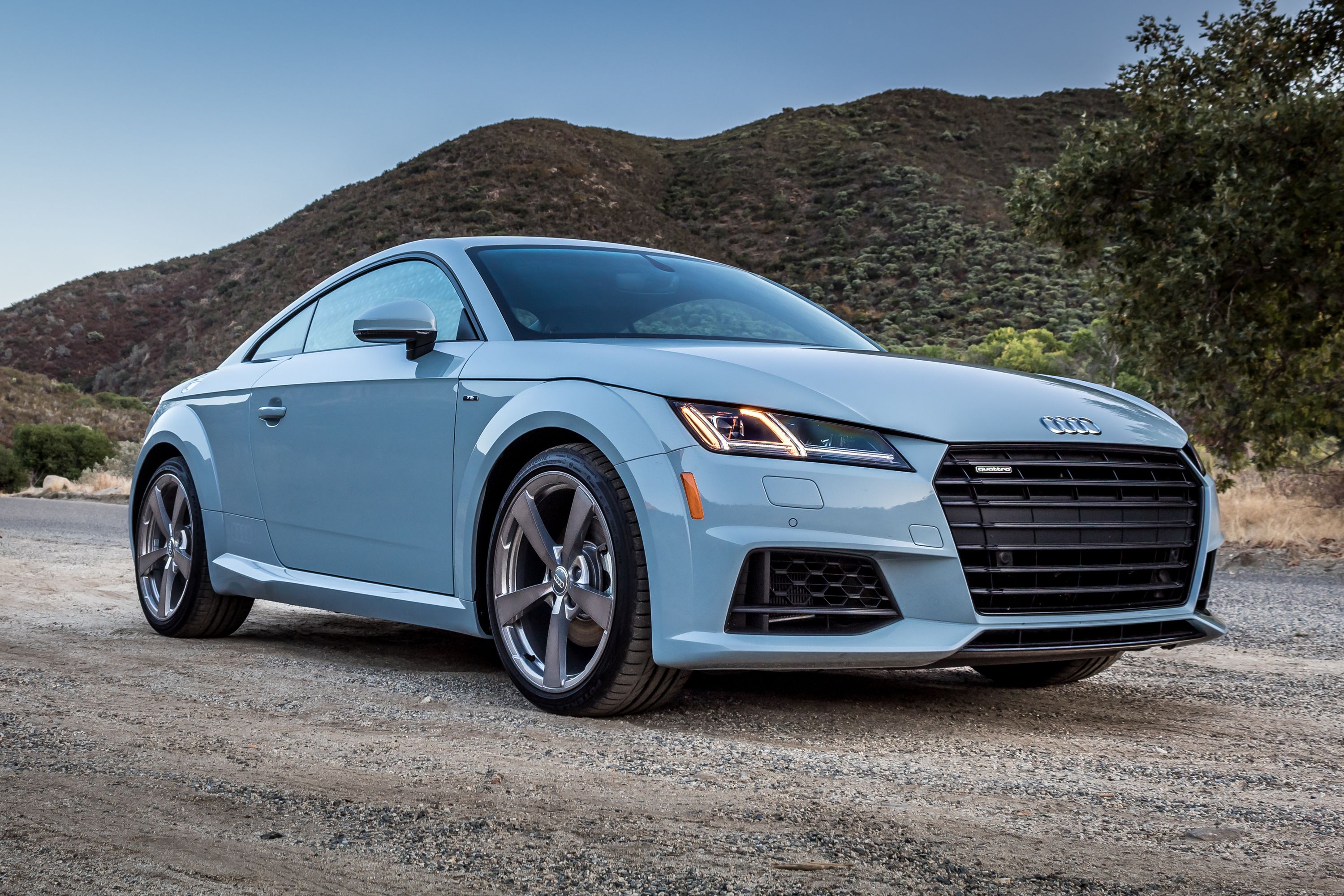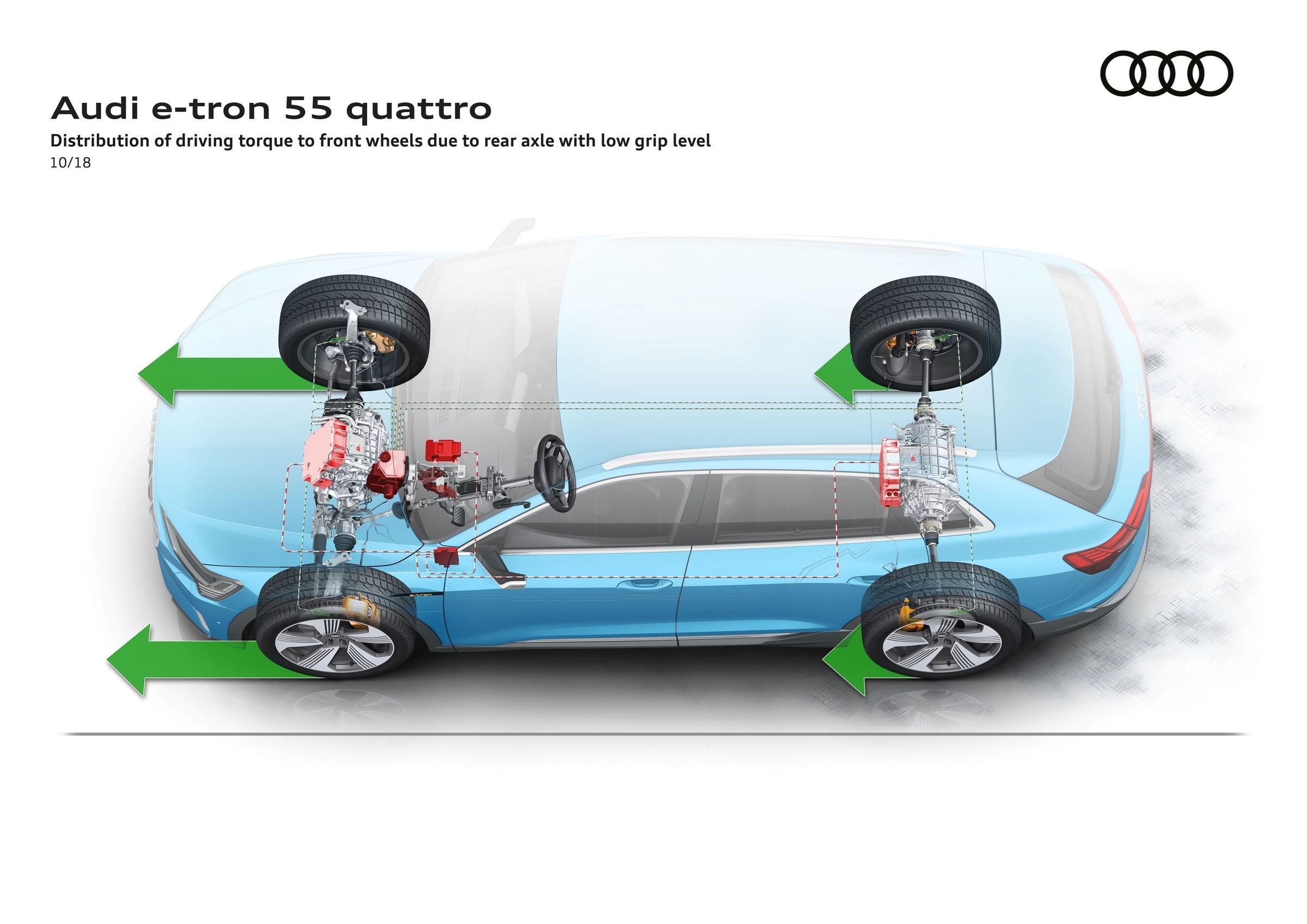
As brand names go, Audi's quattro AWD system is about as famous as they come, its reputation cemented in the 1980s with numerous World Rally Championships, and bolstered by the automaker's success in IMSA and Trans-Am racing in the '80s and '90s.
But the system has evolved in the forty years since it was first developed, from a single-configuration AWD setup with three differentials - front, center, and rear - to a group of five distinct AWD setups tailored to different vehicle sizes and different performance goals. Audi has recently walked us through all the major quattro developments from over the years, and we're sharing those details here.
The earliest Audi quattro systems, as seen in the Audi Quattro road and rally car model line, was relatively simple, using three differentials to distribute torque to all four wheels. The center differential, which split torque between the front and rear axles, could be locked by a vacuum-operated switch in the cabin, which had the effect of tying the axles' rotational speeds together so that they drove at the same speed, no matter the conditions. Another switch locked the rear differential.
Years after its introduction, Audi exchanged its vacuum-locking center differential for a Torsen - or "torque-sensing" - unit that used a clever arrangement of worm gears to "sense" a loss of traction and redistribute torque accordingly. Up to two thirds of the total torque available could be sent to either axle. A rear differential lock switch lingered, although in some larger vehicles, Audi instead deployed a Torsen rear diff.
That's all fine and well for bigger vehicles where the engine is situated longitudinally (front-to-back), but what about smaller cars and their transverse-mounted engines? Audi found its solution around the year 2000 with Haldex, now a division of BorgWarner. The system, as used in cars like the Audi TT, was comparatively complex, using sensors for engine speed, throttle position, and engine torque as inputs to fine-tune the operation of the rear-mounted Haldex drive unit, which selectively engages or disengages the rear axle based on whether it's needed.
The "guts" of that drive unit are no less complicated; whenever a sizable difference in rotational speed is detected between wheels, an undulating lifting plate picks up rotational speed, moving a piston that builds up hydraulic pressure within the unit so that torque begins transmitting to the wheels.
Today's Audi quattro AWD systems are no less complicated, making tremendous use of both mechanical and computerized systems to deliver maximum traction in all conditions. Nowhere is that more true than in the Audi R8 supercar, where a mid-rear-mounted dual-clutch automatic transmission with an integrated rear differential and locking center differential is all packaged tightly around the mid-mounted engine. Torque is sent to the front differential through a prop shaft, where an integrated electrohydraulic clutch pack can activate or deactivate the front axle within milliseconds.
Now, Audi's quattro AWD is set to take yet another big leap forward as the Volkswagen Group continues its fervent pursuit of powertrain electrification. Audi's e-tron quattro AWD uses two or three electric motors for propulsion - one at the front, and one or two at the rear - and discrete single-speed transmissions to drive all four wheels. This allows for maximum torque vectoring from front to back and, in the three-motor version, between the rear wheels.
It's shaping up to be the best, most capable and responsive Audi quattro system of all time - and that's saying something.

